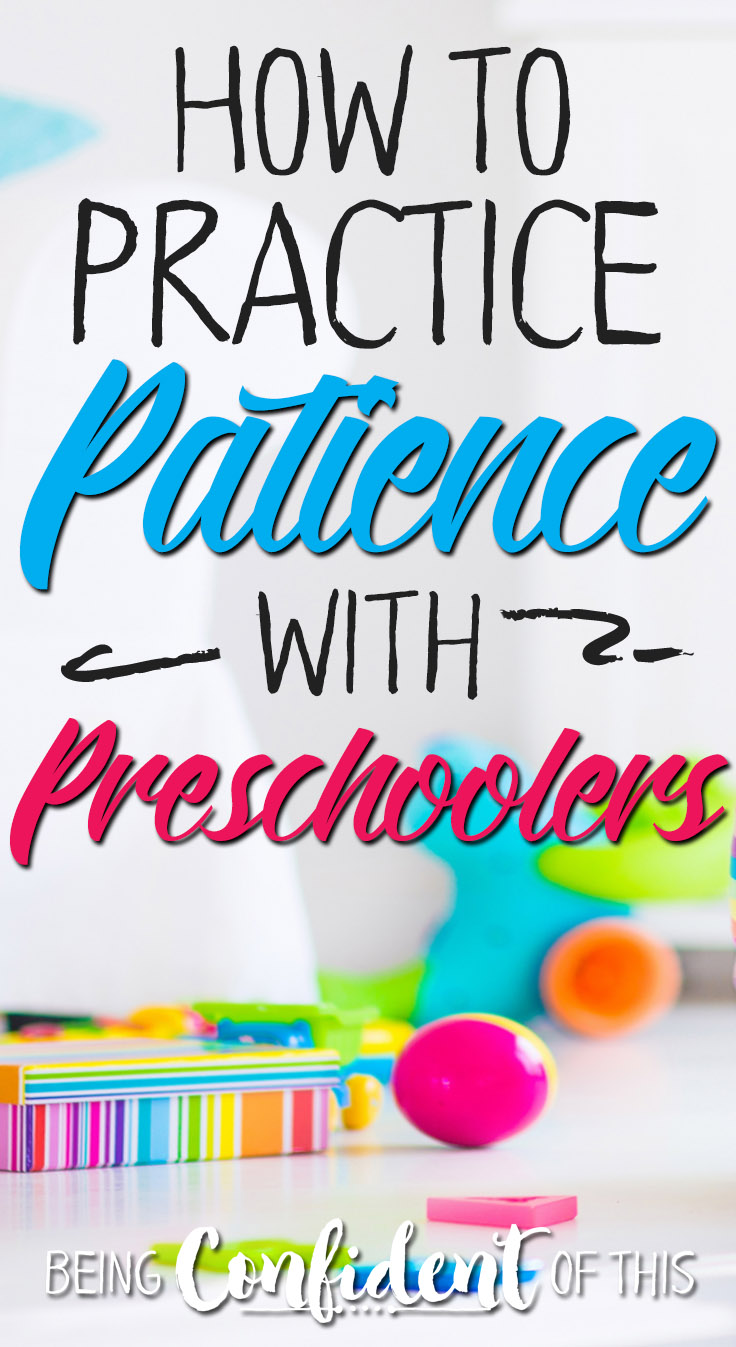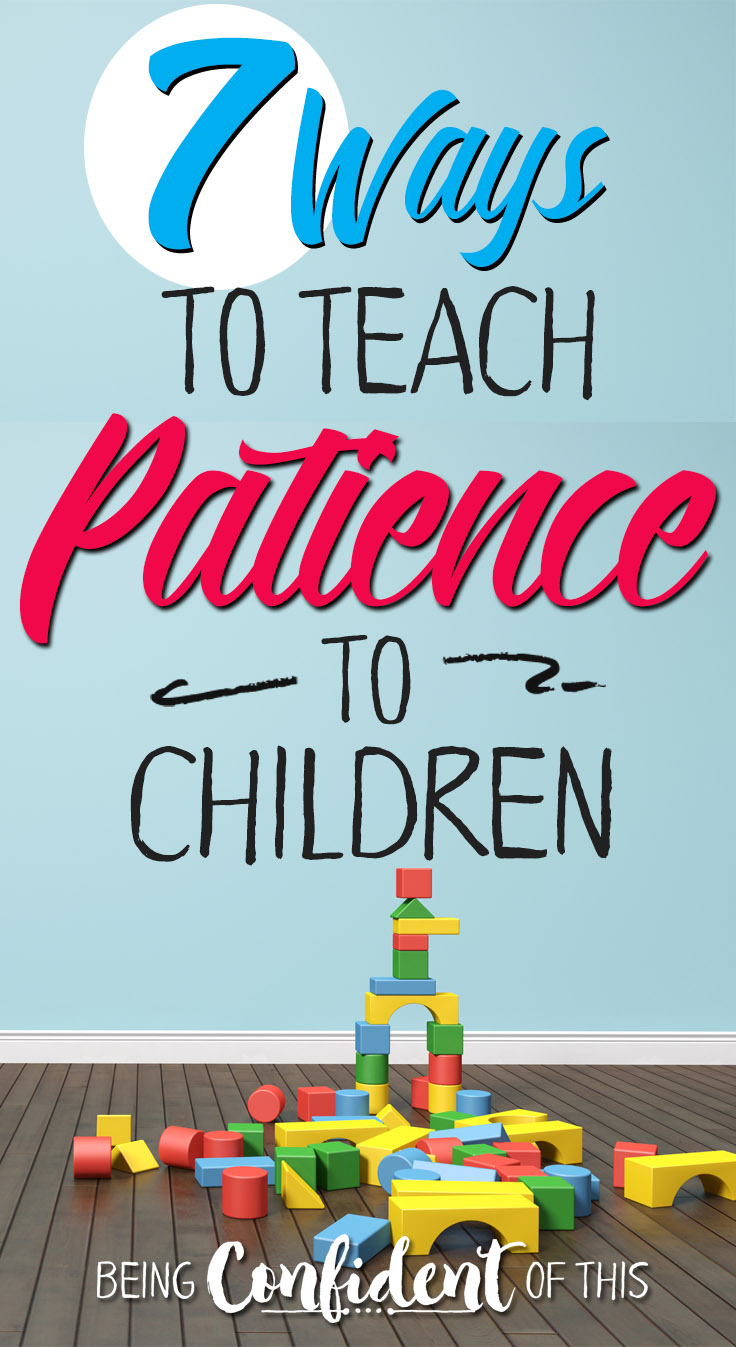It’s the longest hour of the day, that chaotic stretch of time when naps have ended but supper isn’t ready yet and Daddy won’t be home for another sixty minutes.
In our home, it’s often a time of crankiness and whining and neediness and hunger and all too often, a time of mom’s frustration.
The older boys are home from school, so the seven-year-old needs help with homework and the teen needs a permission slip signed. The twins are rubbing sleep from their eyes and asking for snacks or juice or just to be held. I’m trying to find the motivation to start supper preparations, but one twin is clinging to my leg and the other is crying for some unknown reason in the next room.
What’s a mama to do?
I’m ashamed to say that this mom’s reaction can often be a sharp, “Everyone. BE. PATIENT!!” followed by a mini-rant of my own about how I only have two hands and they are both full and can’t they just wait for a few minutes because I can’t help everyone at one time!
Why is it that a request to be patient or wait creates the exact opposite effect than what parents desire to see in their children?
I think most children who hear “be patient” or “just wait” see it as an immediate no.
They feel we have not acknowledged their needs and are, in effect, just ignoring them. So, they ask again…and again…and again…almost infinitely.
As an adult who sometimes (ok, maybe often) struggles with impatience herself, I feel for my children when they have to wait. However, I know that they need to learn patience in order to survive in the real world, and preschoolers are the perfect age to start practicing patience.
The reason I say “practice” is that patience, like any other virtue, takes time to learn. Patience is also something we must intentionally teach to our children, not something they will magically acquire on their own.
And in this day and age, I think we can all agree that patience seems to be lacking in our society!

7 Ways to Practice Patience with Preschoolers:
*This post makes use of affiliate links. For more information, please visit Being Confident of This’s About page. Thank you for supporting the ministry of this site!
1. Model patience yourself.
I know you saw this one coming! 🙂 Young children are excellent imitators, and unfortunately sometimes that backfires on us parents. Our middle child was a very impatient little guy, even from birth. During his toddler years, I spent many days questioning my ability to parent him to adulthood, seriously.
One day, he was even more impatient than usual, and I found myself throwing a little fit right back at him, asking why he couldn’t just BE PATIENT. As soon as the whiny words left my mouth, I realized I was being just as impatient with him as he was being with me. How could he possibly learn to be patient when his mama was not?
Another way to provide models for your children is to read books about being patient with them. This one is a favorite with our youngest two children!
2. Change your speech.
When multiple children (or even just one particularly persistent child) make requests at the same time and you already have your hands full, what is your response? As you read above, my first response is typically frustration over my inability to help all four children at the same time. What if, instead of a frustrated command to be patient, my children heard me talk excitedly about an opportunity to practice a new skill?
What if instead of frowning or scowling, I smiled at them (even if I’m not smiling on the inside) and said, “Let’s practice being patient! Who can do a really good job waiting quietly for mommy while she finishes this job? We’ll use our words instead of whining, and we’ll wait until mommy’s hands are free. Who can practice patience for me?”
Or, what if we used the word “choose,” especially with children who are older. Instead of a pert command to be patient, I can remind them that they have a choice about their feelings. They can choose patience rather than frustration. (And so can the mama!)
3. Distract them.
Although preschoolers are experts at wanting things, they are also fairly easy to distract (in comparison to older children). Ask your children to find another activity while they are waiting. Although you might make a few suggestions, put the responsibility for occupying themselves on their shoulders, not yours.
When I’m cooking supper, I might say something like, “Why don’t you practice patience by coloring while you wait for mommy.” If they don’t like my suggestion, then I let them know it will be up to them to find something to do.
4. Give young children a timeline.
While preschoolers are beginning to grasp the concept of time, they really can’t understand what minutes or hours or days are yet. In their minds, ten minutes might as well be two hours, and that feels like a long time for a preschooler!
Even worse is the indefinite response of “Just wait.” However, if you relate those minutes or hours to scheduled events they are already familiar with, then they can understand how long they will have to wait.
For example, if we are going to the playground later in the day, but one of my children wants to leave now, then I would tell them we’re going after nap-time. Use phrases like after this song, when you wake up from sleeping, after snack, when I finish this basket of laundry, and so forth, that give them more tangible ideas of the time frame they are dealing with. If it’s going to be a particularly long wait, I give them multiple time markers, as in: first mommy has to vacuum the floor, then we’ll pick up toys, and then we get to go to the park.
I wish I would have known about this kind of kid-friendly timer when our children were younger, but I’m considering purchasing one still for our youngest boy, who has some special needs. I like how it gives a visual cue (other than numbers) as well as an auditory cue, and it would save me from answering repeated questions about “How many more minutes?” 🙂

5. Remind them.
Let’s see if this scenario sounds familiar. “Mommy can I watch cartoons? Can I have more milk? Can I have a cookie? Can I? Can I? Can I?” Preschoolers have many wants. As a mom, I know it’s not healthy for me to indulge all of those wants.
So, while I’m imposing limits, instead of just saying no or wait (for an indefinite amount of time), I like to remind them of what they have already had. “You already watched cartoons. Now it’s time to play.” “You already had a glass of milk, but you may have water.” “I already played with you this morning, but I’ll play with you again after nap-time.”
6. Sing the “Have Patience” song.
I don’t know who wrote the “Clean Up” song, but that person deserves an award! It’s like magic! You don’t even have to tell children to pick up toys because when they hear it, they automatically know what to do. The lesser known “Have Patience” song (by Music Machine) can have a similar effect if you use it consistently.
First of all, singing in general, tends to lighten the mood. Second, the song reminds children of the behavior you would like to see. You can find the “Have Patience” song here. I only sing the chorus with the kids (and it is fun to speed it up as you repeat!).
You can also buy your own copy for use at home, in the car, etc. It’s currently on my wishlist!
7. Praise them lavishly!
At this age, children are often eager to please, so positive reinforcement usually works more effectively than negative. If you see your children actively practicing patience, then tell them how much you appreciate their hard work (because it IS hard to wait, isn’t it?)! Praise often enough that they are encouraged to continue practicing patience up to the very end.
For example, if halfway through a waiting period, I notice my daughter growing restless or whining, I will praise her for the good job she has done so far and ask her to continue. I might even draw her attention to how little time is left. Many times, the magic is in the phrasing!
Patience is a virtue worth instilling in young hearts, but it’s not an easy task. Learning patience takes time and consistency. It also takes a mama who is willing to look at herself and ask, “Am I a patient person?”
Of course, we cannot expect perfection. I’m going to suggest that we learn to be content with imperfect progress in the area of patience (to borrow a phrase from Lysa Terkeurst’s book Unlgued).
As long as we are consistently moving forward in the bigger picture (even if sometimes we move back), then we are progressively working toward patience in our homes.
And in my opinion, a patient family is a peaceful family!
Jen 🙂
When is it most difficult for your children to have patience?